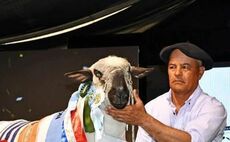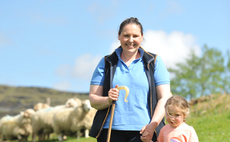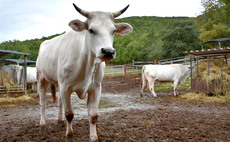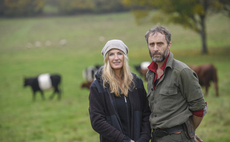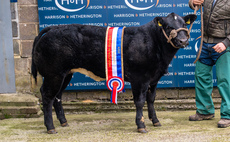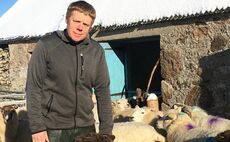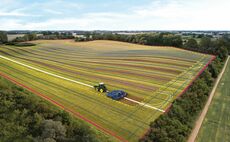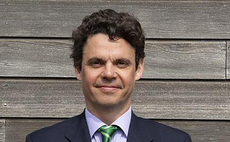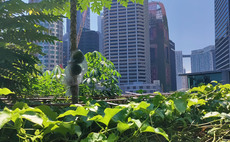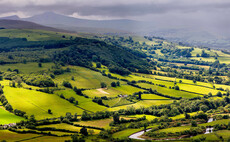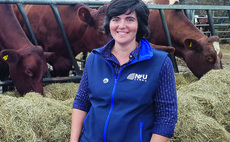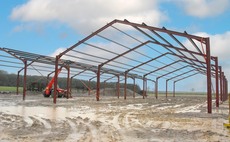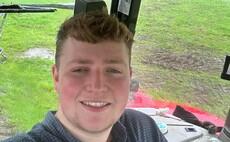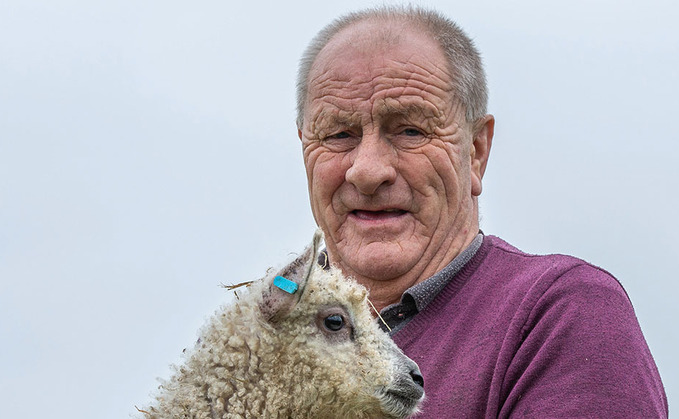
Adrian Tattersall has long enjoyed keeping and showing Wensleydale Longwool sheep, but more recently has found a value in crossing the breed for prime lamb production.
Keeping livestock has always been a sideline for Adrian Tattersall, which in later years has culminated in him breeding and showing Wensleydale Longwools at the family-owned Intake Farm, Hindley, where he grew up.
A gardener by trade before retiring 10 years ago, Adrian lives at the eight-hectare (20-acre) site with his wife, Sandra, and credits his daughter, Claire, as the reason he got into the breed after buying a few in for her to help with looking after when she was a child.
Now, 20 years since the first Wensleydale Longwool ewes arrived from Skipton mart, Adrian is somewhat of a familiar face among other breeders these days, showing sheep locally in the summer and, more recently, serving as northwest regional representative for the society for the past four years.
Showing, Adrian says, will always be something he enjoys doing but back at home the majority of the 40-head ewe flock are crossed with a Charollais for prime lamb production, which all sell to a local butcher at nearby Westhoughton.
Adrian says: "With only having a few sheep, I like being able to support local firms with my lamb. The pure-bred lambs are big framed and can be hard to sell finished, so the thinking with cross-breeding was to bring more shape to the carcase and a faster growing animal more suited to that job.
"It was after a conversation with the butcher that I decided to go with the Charollais and see whether it would work as a cross, and when the lambs arrived, I was impressed with how they grew. It is an extensive system here there is no special treatment, lambs just finish off grass."
That was 10 years ago now and has led to Adrian's flock amalgamating into a mix of pure-bred Wensleydale Longwool ewes alongside, mainly Charollais sired females which have been kept as a result of that cross for breeding.
The system now will see Adrian breed about four or five pure-bred Wensleydales each year for showing, if they are good enough, with a Charollais tup used across everything else.
"First cross lambs kill out at about 24kg deadweight. Alive, they are not much to look at, but it is a smart carcase once dressed and the shop tells us it sells the meat no problem."
The cross-bred females are kept and used to breed from alongside the pure-bred Wensleydales, Adrian says, as they produce lambs well-suited to this outlet and will produce slightly faster growing lambs.
Although other continental breeds have been considered, including a Texel which was trialled a few years ago, Adrian says he has found nothing to rival the Charollais when it came to the growth rates and type of carcase he is looking to produce.
Ewes will start lambing from the third week in January, which usually means there are a handful of lambs ready to hit the spring lamb trade, depending on when Easter falls.
There on in, Adrian will take a draw at least once per month until autumn, making the 10-minute journey to Blacklidge Bros at Wigan himself where lambs are processed.
He says: "I do not know anyone else who has gone down this route of cross-breeding but it works for us, and while the shop is happy we will keep producing what they want to sell."
While it might create a simpler system to cease keeping the Wensleydale Longwools in favour of more commercial type ewes, Adrian says he has come to enjoy them, particularly for showing which he does at several shows in the North West each year.
And he has had his fair share of successes, which last year saw him take the any other breed and group of three championships at Chipping, as well as the any other breed championship at Westmorland and breed championship at Cheshire shows.
He says: "I enjoy meeting people and showing gets you out and about to do that. They are good social occasions and it is something I enjoy doing."
Preparation for the show season is set to get underway in a few weeks, with shearling show sheep due to be shorn ahead of the coming season.
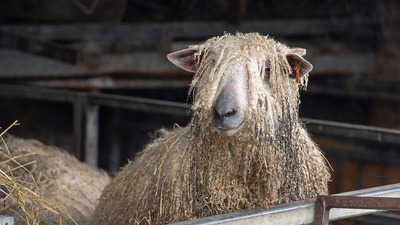
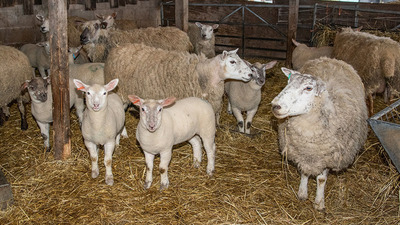
Farm facts
- Eight hectares (20 acres) of owned ground
- 40-ewe flock, roughly half of which are Wensleydale Longwools alongside mainly Charollais sired ewes out of Wensleydales
- Most ewes are crossed to a Charollais for prime lamb production, with some pure-bred Wensleydales bred for showing
- Show at local shows including Cheshire, Westmorland, Lancashire, Chipping and Trawden
Famed for its quality, lustrous fleece, the Wensleydale Longwool also commands a significantly higher price for its wool which can be used to create a certain effect in hand knitting yarn, knitwear and cloth and sometimes in upholstery fabrics.
It is also said to be ideal for dyeing, and its quality is another reason Adrian says he decided to stick with the breed.
He says: "Selling fleeces through British Wool, we have known Wensleydale fleeces to have been worth up to £6.50/kg, but they can make even more if they are exported or sold privately, whereas the Charollais wool is worth about 80p/kg."
Situated on the outskirts of Wigan, Adrian explains that urban development surrounding the farm has and is continuing to build significantly. Former greenfield sites surrounding the dwelling are now few and far between, with the town of Hindley having built around it.
But with breeding sheep a sideline he has enjoyed throughout his life on the farm where he grew up, Adrian says he will continue to farm as long as he is able.



